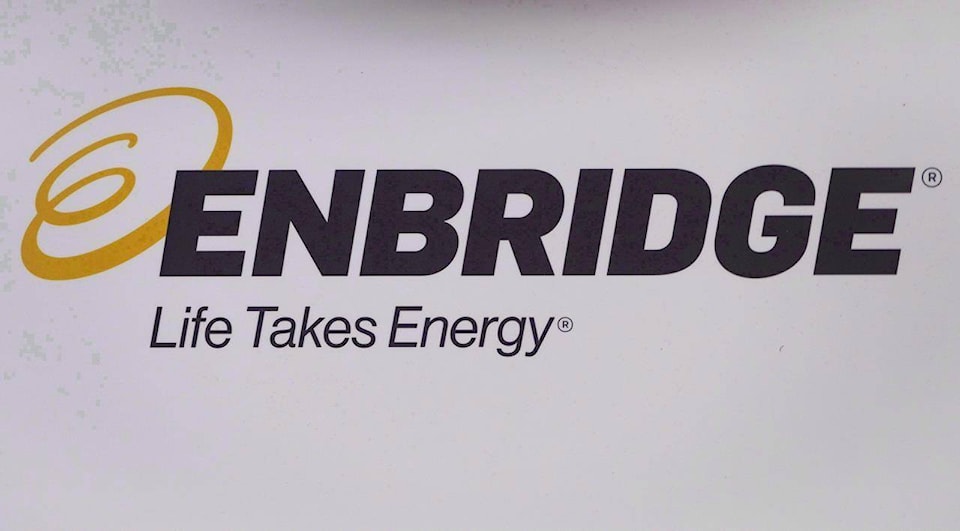CALGARY — Returns to shareholders will be a higher priority as Enbridge Inc. completes its large capital projects, company executives told investors Tuesday, punctuating the strategy with an increase in its dividend.
A subdued share price and increased regulatory risk for big projects make buying back its shares and considering higher dividends, along with smaller organic growth projects, a better way forward after years of strong growth, said CEO Al Monaco at Enbridge’s online investor day.
He said the company expects to have $5 billion to $6 billion a year in available cash to invest after spending is complete on its Line 3 replacement pipeline project late next year, of which two-thirds will be used for low-risk, low-capital-intensity projects, modernization and utility rate base investments.
“Traditional organic growth, those are the larger, longer-lead (time) projects, these will compete with buybacks now, so that will be a dynamic call,” he said, adding debt repayment and acquisitions will also be given less priority for capital.
The increase in quarterly dividend payments to 83.5 cents from 81 cents per share was less than what analysts had expected and fell short of company expectations of annual five to seven per cent growth in distributable cash flow through 2023 and beyond.
“Frankly, in our view, larger increases aren’t being fully capitalized in our share price today. So this dividend makes sense to us in 2021,” Monaco said. Enbridge shares have fallen by more than 25 per cent since last February.
Construction on the Minnesota portion of Line 3 began Dec. 1 after state authorities granted a final permit and regulators rejected a challenge from two First Nations groups.
The company already has about 2,000 workers in the field and that will grow to about 4,000, said Vern Yu, Enbridge vice-president of liquids pipelines.
The Canadian portion of the project to increase capacity to 760,000 barrels of oil per day from about 390,000 bpd was completed in late 2019 and cost about $5.3 billion.
The cost of the U.S. part of the project is expected to rise above its estimate of US$2.9 billion due to the delays, COVID-19 pandemic safety measures and the fact construction is starting in winter, a factor that will also likely mean the construction period will be on the longer side of the expected six to nine months, Yu said.
“While the costs are going up, we don’t expect the project returns to be substantially different,” he said, adding higher costs can be recovered with toll surcharges.
An updated cost estimate is expected to be available early next year.
Enbridge said it expects its distributable cash flow per share for this year to be near the midpoint of its $4.50 to $4.80 guidance range. Next year, the company says it expects between $4.70 and $5.
Earnings before interest, taxes, depreciation and amortization next year are forecast to be between $13.9 billion and $14.3 billion.
In November, Enbridge, which operates the largest crude oil pipeline network in North America, said it would reduce its greenhouse gas emissions intensity to net zero by 2050, adding it is also aiming to reduce emission intensity by 35 per cent by 2030 compared with 2018.
It said Tuesday it expects throughput on its Mainline oil pipeline from Western Canada into the U.S. to run at or near capacity in 2021 as producers ramp up production due to stronger prices and the suspension of Alberta’s oil curtailment program.
Volumes dropped off earlier this year as pandemic lockdowns reduced demand for oil and lower prices encouraged producers to slow output.
This report by The Canadian Press was first published Dec. 8, 2021.
Companies in this story: (TSX:ENB)
Dan Healing, The Canadian Press
